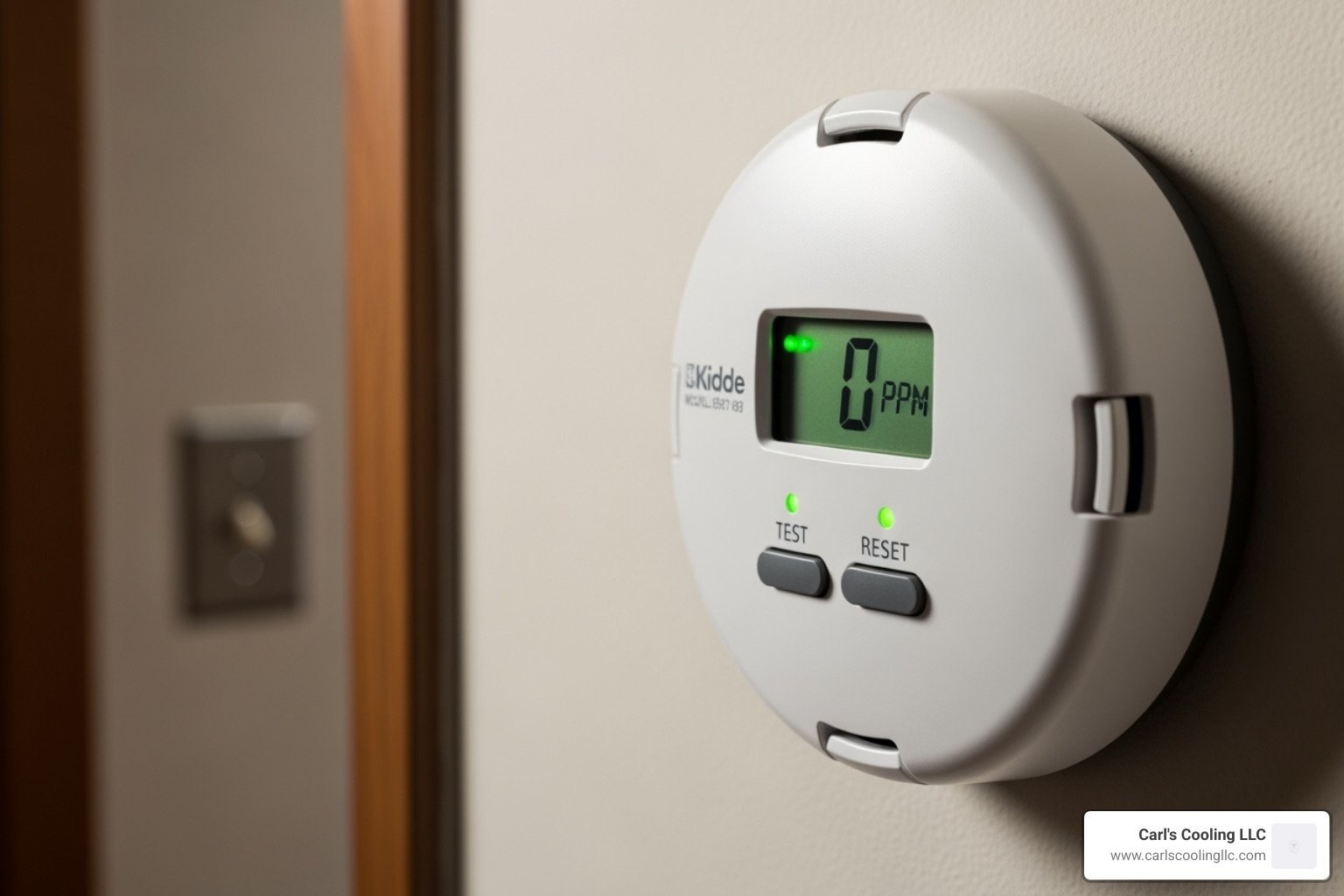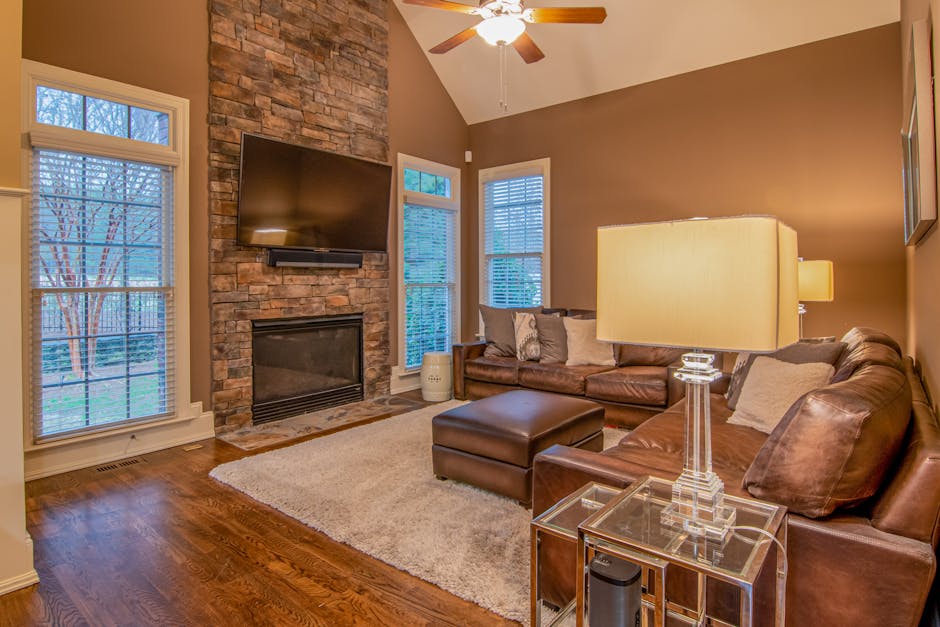The Invisible Killer in Your Home
A carbon monoxide leak can turn your safe haven into a silent threat. Carbon monoxide (CO) is an odorless, colorless gas that kills without warning - earning it the nickname "the invisible killer."
Quick Detection Guide for Carbon Monoxide Leaks:
- Install CO detectors on every level of your home, especially near sleeping areas
- Watch for physical signs: yellow burner flames, soot stains around appliances, stale air
- Know the symptoms: flu-like illness, headaches, dizziness, nausea affecting everyone in the home
- Take immediate action: If your alarm sounds or you suspect a leak, evacuate and call 911
- Schedule annual maintenance for all fuel-burning appliances
The statistics are sobering. According to the CDC, more than 400 Americans die from unintentional carbon monoxide poisoning each year, with over 100,000 visiting emergency rooms. In Minnesota alone, an average of 14 people die annually from CO poisoning.
Carbon monoxide forms when fuel burns without enough oxygen - a common occurrence with malfunctioning furnaces, water heaters, fireplaces, and other household appliances. When you breathe it in, CO replaces oxygen in your blood, leading to tissue damage or death.
The good news? Carbon monoxide poisoning is completely preventable with the right knowledge and equipment.
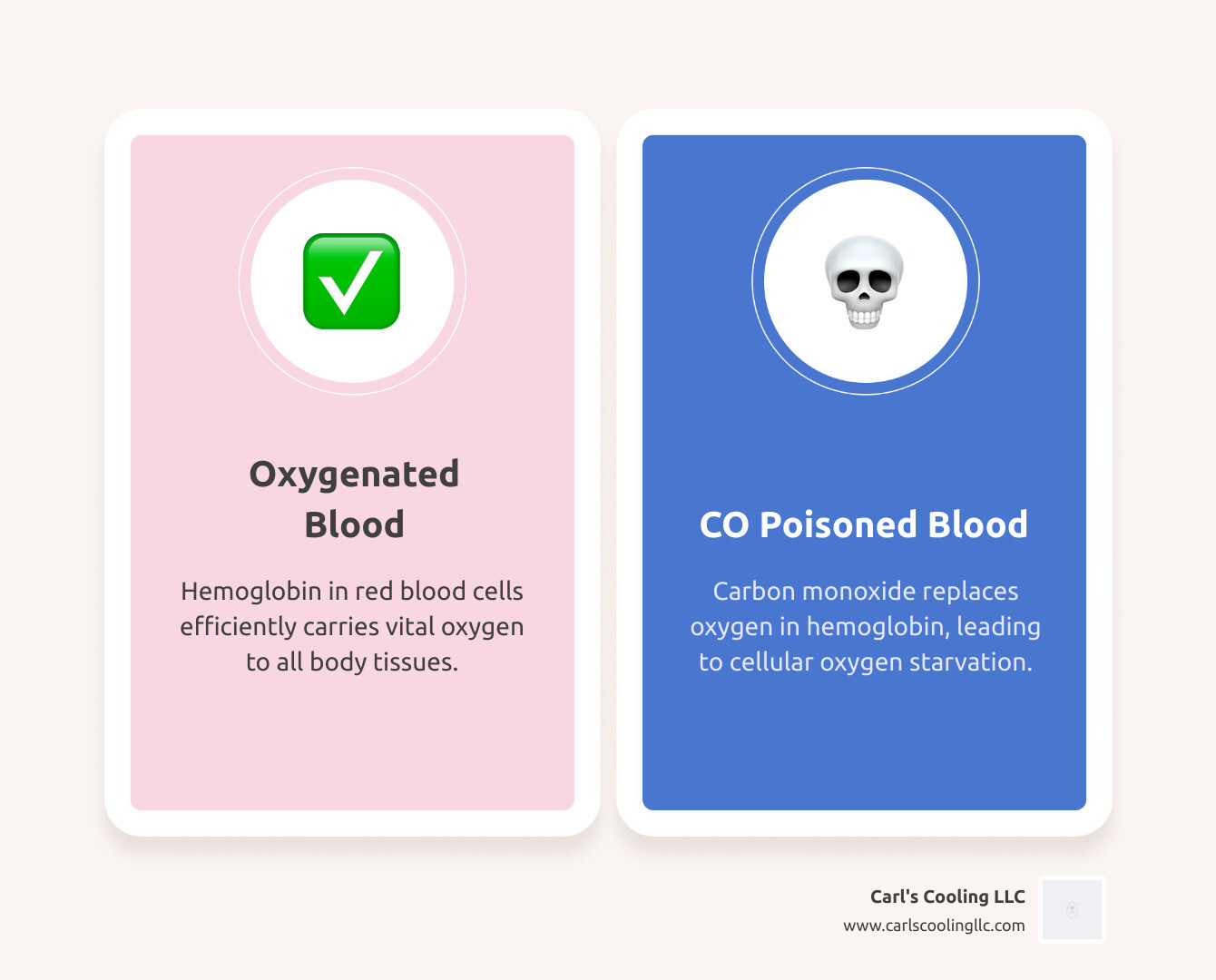
Common Sources of Carbon Monoxide in Your Home
Understanding where carbon monoxide leaks originate is your first step toward protecting your family. This invisible threat doesn't just appear out of nowhere - it's created when fuel doesn't burn completely due to poor ventilation, faulty equipment, or improper use.
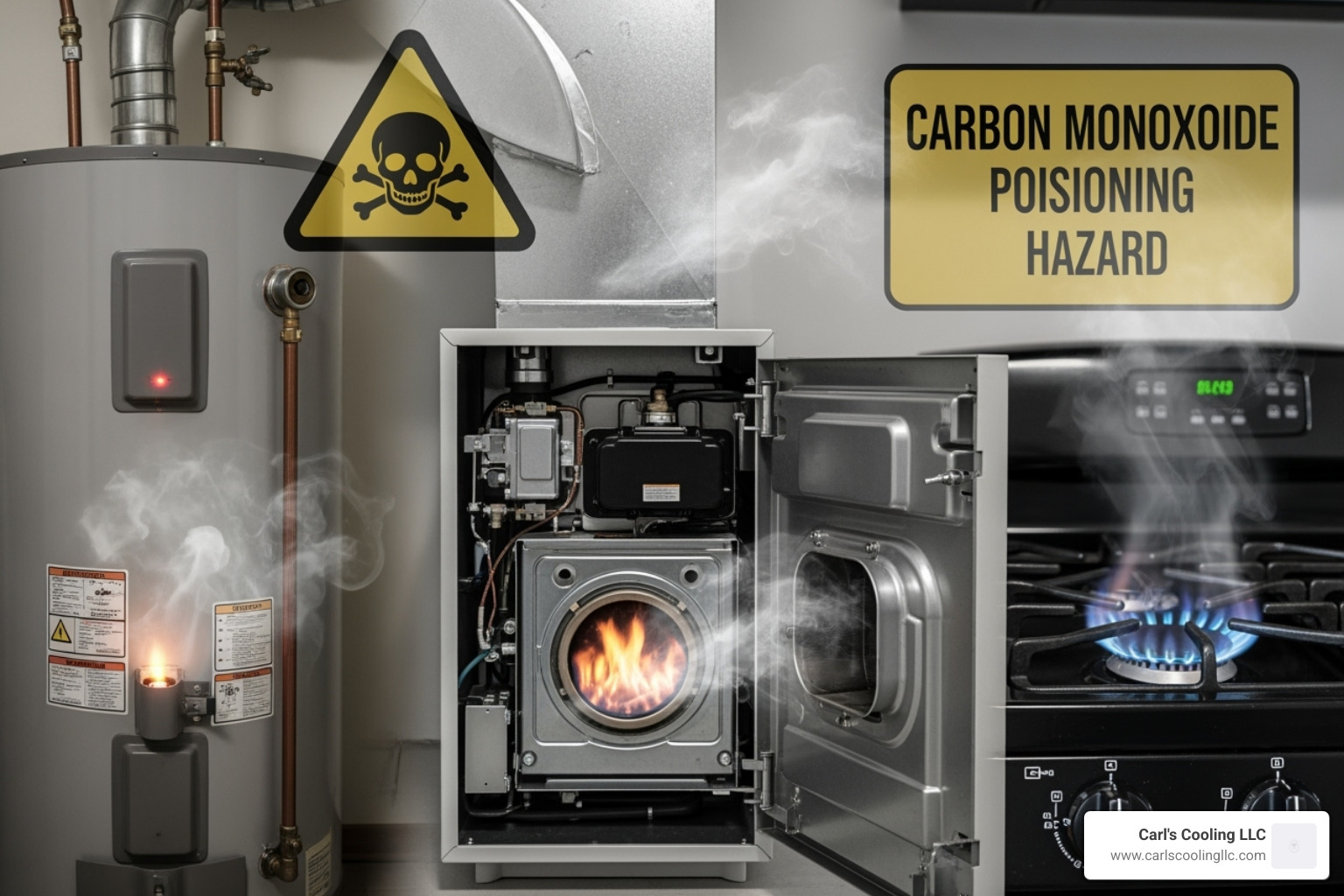
The most common culprits are hiding in plain sight throughout your home. Fuel-burning appliances like your furnace, water heater, and gas range are the biggest indoor sources of carbon monoxide. When these hardworking appliances develop problems - think cracked heat exchangers, blocked vents, or poor maintenance - they can quietly pump CO into your living space instead of safely venting it outside.
Your cozy fireplace and wood stove can also become dangerous if their chimneys are blocked or damaged. Even that trusty gas range in your kitchen poses risks when burners aren't adjusted properly or ventilation is poor.
Portable generators deserve special attention here. While they're lifesavers during power outages, they're also CO factories that can turn deadly fast. Never run generators indoors, in garages, or near open windows and doors. The same goes for charcoal grills - they belong outside, period. Using them indoors or in enclosed spaces has led to tragic accidents.
Don't overlook your attached garage either. Running your car to warm it up might seem harmless, but vehicle exhaust contains high levels of CO that can seep into your home. Always back your vehicle out immediately after starting it.
Here's where things get tricky: blocked vents and poor ventilation can turn any safe appliance into a hazard. Snow covering your furnace vent, a bird's nest in your chimney, or debris blocking your dryer vent can force CO back into your home. Even covering your oven bottom with foil can disrupt airflow and create problems.
Anything that burns fuel can produce carbon monoxide. The key is making sure these appliances are properly installed, regularly maintained, and used exactly as intended. When in doubt, it's always worth having a professional take a look.
How to Detect a Carbon Monoxide Leak
Since carbon monoxide is truly an "invisible killer" – completely odorless, colorless, and tasteless – detecting a carbon monoxide leak becomes a detective game. You'll need to watch for subtle clues your appliances might be giving you, while also relying on dedicated detection devices to keep your family safe.
Physical Signs of a Carbon Monoxide Leak
Think of these warning signs as your appliances trying to tell you something's wrong. While you can't see or smell CO itself, the conditions that create it often leave behind telltale clues.
Soot stains around your furnace, fireplace, or water heater are like red flags waving at you. These sooty or brownish-yellow marks around appliance openings signal incomplete combustion – exactly the condition that produces carbon monoxide.
Your yellow burner flame is another important messenger. Gas appliances should typically burn with a crisp blue flame. If you notice a yellow, orange, or unusually large flame, your appliance isn't burning fuel efficiently. Quick note: Some decorative gas fireplaces are designed with yellow flames for looks, so check your owner's manual if you're unsure.
Stale air that feels heavy or stuffy can indicate poor ventilation. While CO itself has no smell, malfunctioning appliances often create other odors or make the air feel different.
Watch for fallen soot in your fireplace or any smoke that seems to drift back into your room instead of going up the chimney. Your chimney should create an upward draft – if you don't feel that pull of air when you open the damper, something might be blocking the flue.
Excessive window condensation near appliances, pilot light issues where flames keep going out, or any unusual sounds from your heating equipment all deserve immediate attention. These aren't just minor annoyances – they're potential warning signs of a carbon monoxide leak.
The Essential Role of CO Alarms
Here's the truth: those physical signs can be subtle, and you might miss them. That's exactly why CO alarms aren't just helpful – they're absolutely essential. Think of them as your 24/7 bodyguard against the invisible killer.
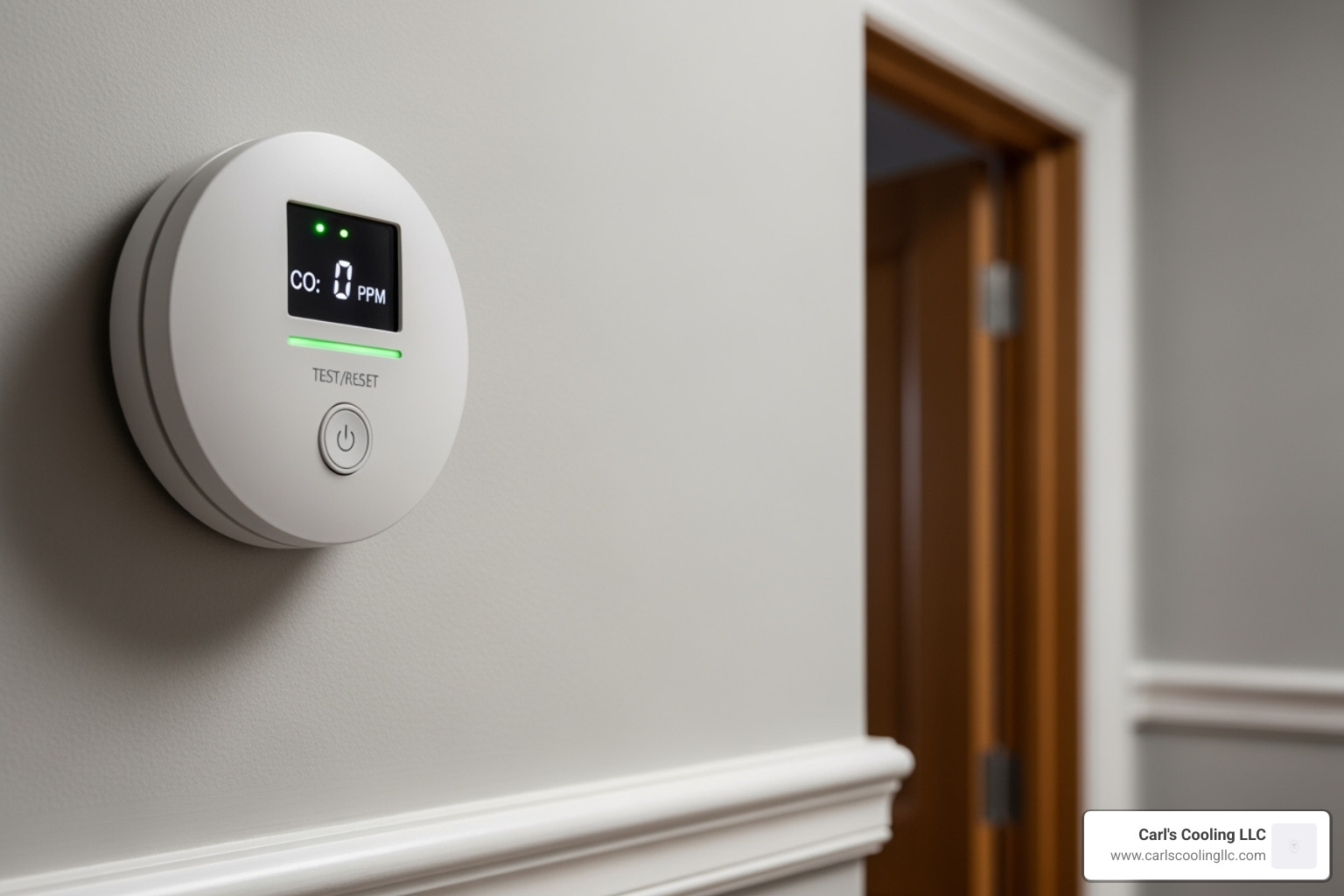
Alarm placement makes all the difference between life and death. You need CO detectors on every level of your home, including the basement and any attached garage. Place them near sleeping areas – within 10 feet of bedroom doors – so they'll wake you if danger strikes at night.
Mount them on walls or ceilings following the manufacturer's instructions. Unlike smoke detectors, CO alarms have their own placement rules, so don't just guess.
Testing alarms monthly takes less time than brewing your morning coffee, but it's infinitely more important. Press that test button and listen for the loud beep. If it sounds weak or doesn't work at all, change the batteries immediately.
Battery replacement should happen at least once a year – many people do it when they change their clocks for daylight saving time. It's an easy habit that could save your life.
Alarm lifespan matters too. Most CO detectors last 5 to 7 years, but they don't last forever. When your alarm starts chirping to signal its end-of-life, don't ignore it – replace the entire unit right away.
CO alarms work around the clock, constantly sniffing the air for dangerous levels of carbon monoxide. They'll shriek loudly if they detect a problem, giving you precious time to get your family to safety. For more information on what those different beeps and alarms mean, you can learn about different alarm sounds.
These devices are your early warning system – the difference between a close call and a tragedy.
Recognizing the Symptoms of CO Poisoning
The scary thing about a carbon monoxide leak is how sneaky it can be. CO poisoning doesn't announce itself with dramatic symptoms – instead, it quietly masquerades as something much more common, like the flu or food poisoning. This mistaken identity often delays the critical action that could save lives.

When carbon monoxide enters your bloodstream, it essentially hijacks your red blood cells. Instead of carrying life-giving oxygen throughout your body, these cells become loaded with CO instead. Your organs and tissues slowly starve for oxygen, creating symptoms that start mild but can quickly turn dangerous.
The most telling sign is when symptoms feel like the flu, but with a twist. You might experience a headache that feels like a tight band across your forehead – often the very first warning sign. Weakness and dizziness follow, making you feel unsteady or unusually tired. Nausea and vomiting can make you think you've caught a stomach bug, while shortness of breath leaves you feeling winded without exertion.
As CO levels rise, things get more serious. Confusion sets in, making it hard to think clearly or make decisions. Your vision might blur, and you could feel unusually sleepy despite the time of day. Loss of muscle control makes coordination difficult, and in severe cases, loss of consciousness can occur – especially dangerous if you're sleeping and can't respond to the threat.
Here's the key difference that could save your life: Does everyone in your home feel sick at the same time? Unlike a virus that spreads person to person, a carbon monoxide leak affects everyone exposed simultaneously. Do your symptoms disappear when you leave the house and return when you come back home? Do they worsen when you're using fuel-burning appliances like your furnace or fireplace?
If you're nodding yes to these questions, don't wait. This pattern strongly suggests CO poisoning, not a typical illness. In high concentrations, carbon monoxide can cause unconsciousness without any warning symptoms, particularly dangerous for sleeping individuals who can't recognize the danger.
For comprehensive information about CO poisoning symptoms and what to watch for, the CDC's page on carbon monoxide poisoning provides detailed medical guidance.
Who Is Most at Risk?
While a carbon monoxide leak poses a threat to everyone, some people face much greater danger. Their bodies either absorb CO more readily or struggle more with the resulting oxygen deprivation.
Unborn babies face the highest risk of all. Fetal blood cells actually grab onto carbon monoxide more easily than adult blood cells, meaning pregnant women are essentially protecting two lives when it comes to CO safety. The developing baby can suffer severe effects even from CO levels that might only cause mild symptoms in the mother.
Infants and young children are particularly vulnerable for two reasons. First, they breathe faster than adults, which means they inhale more CO in the same amount of time. Second, their smaller bodies and still-developing systems can't handle oxygen deprivation as well as healthy adults.
Older adults often experience more severe symptoms and complications from CO exposure. Their bodies may already be working harder to deliver oxygen effectively, and any existing health conditions can make recovery more difficult. Brain damage from CO poisoning is also more common in elderly individuals.
People with chronic heart disease are fighting an uphill battle. Their hearts already struggle to pump oxygen-rich blood throughout their bodies. When CO reduces the oxygen-carrying capacity of their blood even further, the heart has to work much harder, potentially triggering serious cardiac events.
Those with anemia or breathing problems like asthma or emphysema also face increased risk. Anemia already reduces the blood's ability to carry oxygen, while respiratory conditions make it harder to breathe effectively – both problems that CO exposure makes dramatically worse.
Finally, anyone who is sleeping or intoxicated faces a deadly risk: they might never wake up to recognize the symptoms. CO can cause unconsciousness and death while people sleep peacefully, unaware of the invisible danger filling their home.
Understanding these risk factors helps us protect the most vulnerable members of our families and communities. If you have high-risk individuals in your home, CO detectors and regular appliance maintenance become even more critical for their safety.
Prevention and Emergency Response: Your Action Plan
Think of carbon monoxide leak prevention like maintaining your car - a little regular attention goes a long way toward keeping your family safe. The good news is that most CO incidents are completely preventable with the right habits and quick action when needed.
Preventing a Carbon Monoxide Leak Before It Starts
Your home's fuel-burning appliances are like faithful servants - they work hard for you every day, but they need regular check-ups to stay safe. Annual appliance inspection and maintenance is your most powerful weapon against a carbon monoxide leak. Having your heating systems, water heaters, and other gas-, oil-, or coal-burning appliances serviced by a qualified professional each year can catch problems before they become dangerous. These experts check for proper operation, ensure adequate ventilation, and spot potential issues that could put your family at risk. You can find more info about professional inspections to get started.
Proper ventilation is like giving your appliances room to breathe. Make sure all gas appliances are properly vented to the outside, and keep those vents clear of obstructions - especially during winter when snow and ice love to block them. If you're using your fireplace, always check that the flue is open before lighting that cozy fire. Those horizontal vent pipes should slope slightly upward toward the outdoors to prevent CO from sneaking back inside.
Here's a rule that could save your life: never use outdoor equipment indoors. Portable generators, charcoal grills, oil lanterns, and camping stoves belong outside - period. No exceptions, even if it's raining or cold. When using a generator during power outages, keep it at least 20 feet away from your home and away from windows, doors, or vents. Think of it as a helpful but dangerous neighbor - you want its benefits, but you need to keep your distance.
Your kitchen stove and oven are designed for one thing: cooking delicious meals. Never use them to heat your home - they're simply not built for that job and can create dangerous CO levels. Similarly, never run your car in an attached garage, even with the door open. Back out immediately after starting your vehicle, and have your exhaust system checked annually for leaks.
Finally, choose certified appliances with the seal of a national testing agency, and never block airflow around your gas equipment. Your appliances need proper ventilation to work safely, so keep their surroundings clear.
What to Do if You Suspect a Leak or Your Alarm Sounds
When your CO alarm sounds or you suspect a carbon monoxide leak, every second counts. This isn't the time to investigate or second-guess - it's time to act fast and smart.
Get everyone out immediately. This means every person and every pet in the house needs to get to fresh air right now. Don't stop to grab your phone, wallet, or favorite sweater - just get out. Once you're safely outside and away from the building, call 911 and tell them about the suspected CO leak. If anyone is feeling sick with headaches, dizziness, or nausea, make sure to mention that too.
Here's the hard part: stay outside no matter what. Don't go back in for anything until the fire department or gas company gives you the all-clear. They have special equipment to measure CO levels and find the source of the problem. While you're waiting, make sure everyone is accounted for - this is a good time to do a quick headcount.
If you or anyone in your household experienced symptoms, even mild ones like a headache, seek medical attention immediately. Head to the emergency room and tell them about the possible CO exposure. Carbon monoxide poisoning can have lasting effects, so it's better to be safe.
You might be tempted to open windows or turn off appliances, but only do this if you can do it safely without going back inside. The most important thing is that everyone stays in fresh air until the professionals say it's safe to return.
Once the emergency is over, don't use the suspected appliance again until a qualified professional has inspected it, identified the problem, and made the necessary repairs. This might be inconvenient, but it's a small price to pay for your family's safety.
Ignoring a CO alarm or delaying action can have tragic consequences. Trust your equipment, trust your instincts, and don't hesitate to take these steps seriously.
Frequently Asked Questions about Carbon Monoxide Safety
We get a lot of questions from homeowners about carbon monoxide safety - and honestly, that makes us happy! It means people are taking this invisible threat seriously. Let's tackle some of the most common concerns we hear, so you can feel confident about protecting your family from a carbon monoxide leak.
How often should I replace my CO detector?
Here's something that surprises many people: most CO detectors only last 5 to 7 years. That little device working quietly on your wall? It has an expiration date, just like the milk in your fridge.
The sensors inside gradually lose their effectiveness over time, even if everything seems fine on the outside. Think of it like your car's brakes - they wear out with use, whether you notice it or not.
Always check the manufacturer's recommendation printed right on the unit (usually on the back or side). Some newer models are thoughtful enough to chirp an "end-of-life" warning when it's time to retire them. Don't ignore that sound - it's your detector's way of saying "I've served you well, but it's time for a replacement!"
Can a carbon monoxide leak happen in the summer?
Absolutely! This is one of the biggest misconceptions we encounter. Many folks think carbon monoxide leaks are just a winter problem because that's when we're running our furnaces. But CO doesn't take a summer vacation.
Your gas water heater runs all year long - it doesn't care if it's July or January. Same goes for your gas stove, clothes dryer, and any other fuel-burning appliances. They can malfunction in any season.
Summer actually brings some unique risks. Portable generators get heavy use during storm season when the power goes out. We see people using charcoal grills and camp stoves for backyard gatherings. Boats and RVs are out in full force, and their engines can create CO buildup in enclosed spaces.
The key takeaway? Keep those CO alarms active year-round. Carbon monoxide doesn't check the calendar before it strikes.
Are CO detectors and smoke detectors the same thing?
This is a great question that comes up all the time. The short answer is no - they're completely different devices that protect against different dangers.
Smoke detectors are like your nose for fire. They sense smoke particles floating in the air and scream "Fire!" so you can get out fast. CO detectors are like having super-powered lungs that can "smell" carbon monoxide - that odorless, invisible gas we've been talking about.
Some combination units exist that do both jobs, but they use different technologies inside. It's like having a phone that also takes pictures - same device, different functions.
Your home needs both types of protection. One cannot do the other's job. Think of them as a tag team keeping your family safe - smoke detectors watch for fire, while CO detectors guard against poisonous gas. Together, they've got you covered.
Conclusion: Ensure Your Home's Safety
Understanding the threat of a carbon monoxide leak is the first step toward protecting your family from this invisible danger. Throughout this guide, we've walked through everything you need to know - from identifying common sources like furnaces and water heaters to recognizing the subtle warning signs that something might be wrong.
The reality is that carbon monoxide poisoning is completely preventable when you take the right precautions. Installing CO detectors on every level of your home is absolutely essential - they're your eyes and nose for detecting this odorless, colorless gas. But detectors alone aren't enough.
Prevention truly is your best defense. Regular professional maintenance of your heating systems, water heaters, and other fuel-burning appliances can catch problems before they become dangerous. Keeping vents clear, never using generators indoors, and ensuring proper ventilation are simple steps that make a huge difference.
If your alarm ever sounds or you notice symptoms like headaches and dizziness affecting everyone in your home, don't hesitate - evacuate immediately and call 911. These moments require quick action, not second-guessing.
You don't have to steer home safety alone. If you're concerned about your heating system, need an annual inspection, or simply want peace of mind that your appliances are running safely, professional help is just a phone call away.
At Carl's Cooling LLC, we understand how important your family's safety is to you. Our experienced technicians can inspect your HVAC system, ensure proper ventilation, and help you maintain a safe, comfortable home environment.
Don't wait until warning signs appear. Being proactive about your home's safety means you can rest easy knowing you've done everything possible to protect the people you care about most.
Contact us for professional HVAC services and let Carl's Cooling LLC help you create a safer home, free from the risks of carbon monoxide.

